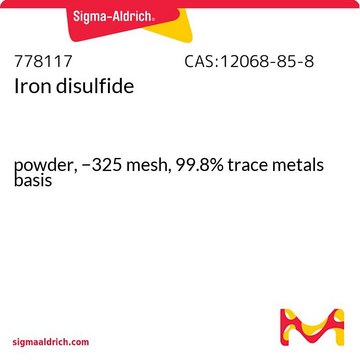Kluczowe dokumenty
01-2690
Aluminum chloride
SAJ first grade, ≥98.0%
About This Item
Polecane produkty
klasa czystości
SAJ first grade
ciśnienie pary
1 mmHg ( 100 °C)
Próba
≥98.0%
Formularz
solid
przydatność reakcji
reagent type: catalyst
core: aluminum
dostępność
available only in Japan
pH
2.4 (20 °C, 100 g/L)
mp
190 °C (lit.)
ciąg SMILES
Cl[Al](Cl)Cl
InChI
1S/Al.3ClH/h;3*1H/q+3;;;/p-3
Klucz InChI
VSCWAEJMTAWNJL-UHFFFAOYSA-K
Szukasz podobnych produktów? Odwiedź Przewodnik dotyczący porównywania produktów
Powiązane kategorie
Cechy i korzyści
Hasło ostrzegawcze
Danger
Zwroty wskazujące rodzaj zagrożenia
Zwroty wskazujące środki ostrożności
Klasyfikacja zagrożeń
Eye Dam. 1 - Skin Corr. 1B
Zagrożenia dodatkowe
Kod klasy składowania
8B - Non-combustible corrosive hazardous materials
Klasa zagrożenia wodnego (WGK)
WGK 1
Temperatura zapłonu (°F)
Not applicable
Temperatura zapłonu (°C)
Not applicable
Środki ochrony indywidualnej
Eyeshields, Faceshields, Gloves, type P3 (EN 143) respirator cartridges
Wybierz jedną z najnowszych wersji:
Masz już ten produkt?
Dokumenty związane z niedawno zakupionymi produktami zostały zamieszczone w Bibliotece dokumentów.
Nasz zespół naukowców ma doświadczenie we wszystkich obszarach badań, w tym w naukach przyrodniczych, materiałoznawstwie, syntezie chemicznej, chromatografii, analityce i wielu innych dziedzinach.
Skontaktuj się z zespołem ds. pomocy technicznej







